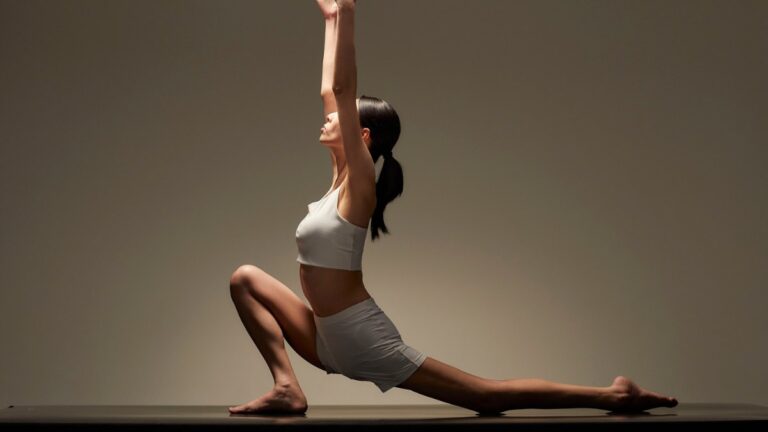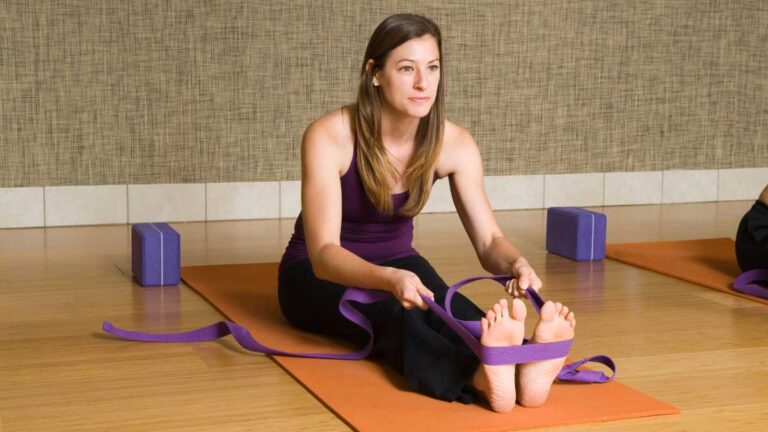Does Pilates Improve Posture? How It Really Works
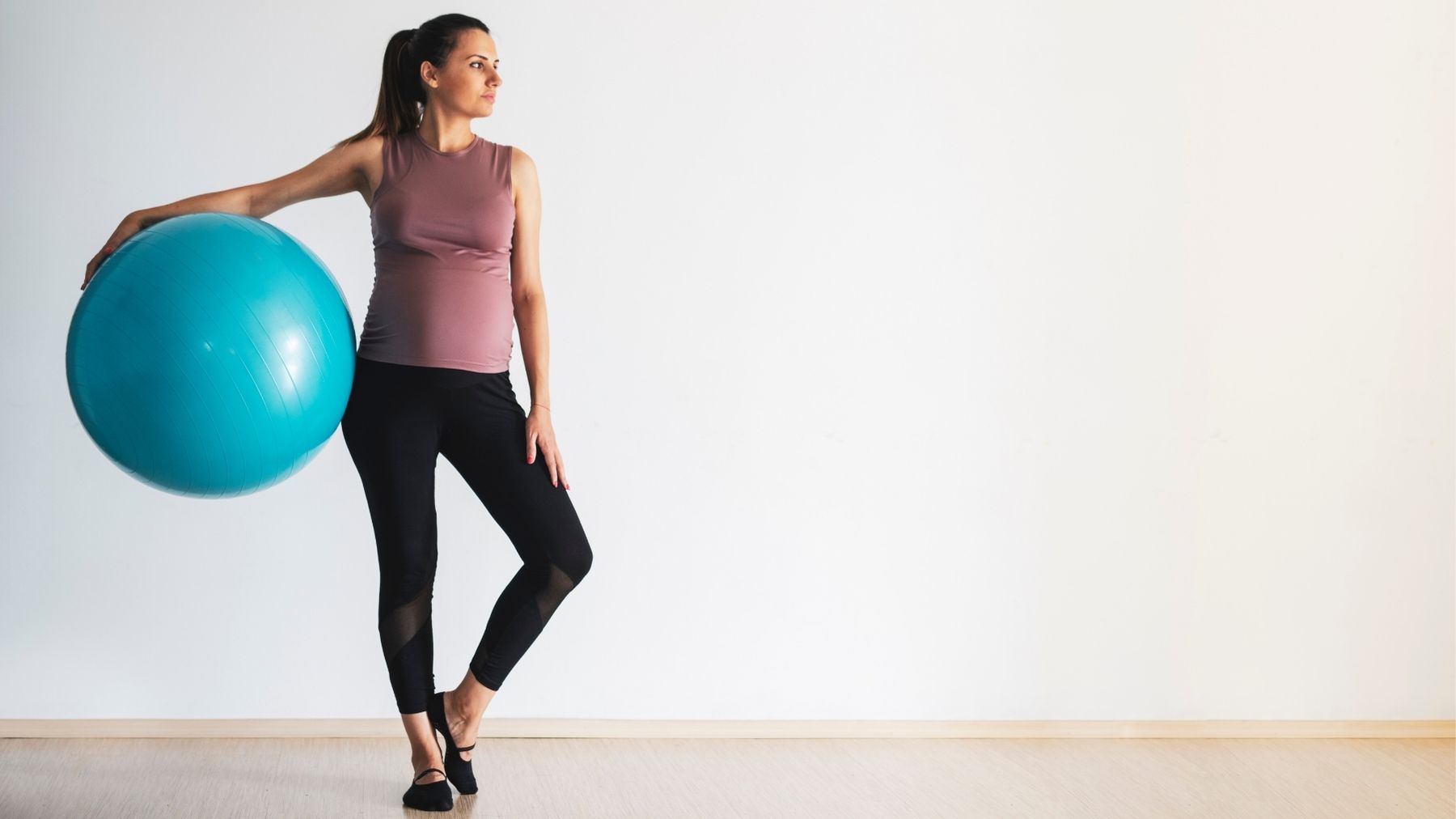
Last Updated on July 15, 2025
Does your upper back curve like a question mark halfway through the day?
Maybe your neck constantly leans forward, and your shoulders feel permanently tensed.
You’re not alone — poor posture has become a silent epidemic, especially among people with desk jobs and high-stress routines.
So, does Pilates improve posture, or is it just another wellness trend?
As a registered nurse and wellness consultant, I can confidently say Pilates is more than graceful movement — it’s a posture retraining system rooted in deep core engagement, spinal support, and body awareness.
In this blog, let’s explore exactly how Pilates transforms your posture from the inside out and how you can start feeling that shift in just a few weeks.
The Real Cost Of Poor Posture

Posture isn’t just about appearance — it’s your body’s foundation. When it’s off, everything else shifts out of balance.
You may feel it in the dull ache between your shoulder blades or the sharp twinge in your lower back every time you stand.
Over time, this imbalance contributes to muscle imbalances, chronic poor posture, and even tension headaches.
According to a study nearly 80% of adults will experience low back pain at some point—poor posture is one of the most common contributors.
Slouching tightens the front body and weakens the back, creating a cycle that’s hard to break without intentional retraining.
But here’s the truth: posture won’t magically fix itself with the occasional stretch or reminder to “sit up straight.”
You need targeted movement that strengthens your postural muscles, realigns your spine, and restores balance to your frame.
Is poor posture reversible?
Yes, especially when you engage the right muscles with consistent, mindful movement like Pilates.
Does Pilates Improve Posture – What Makes Pilates Different From Other Workouts?
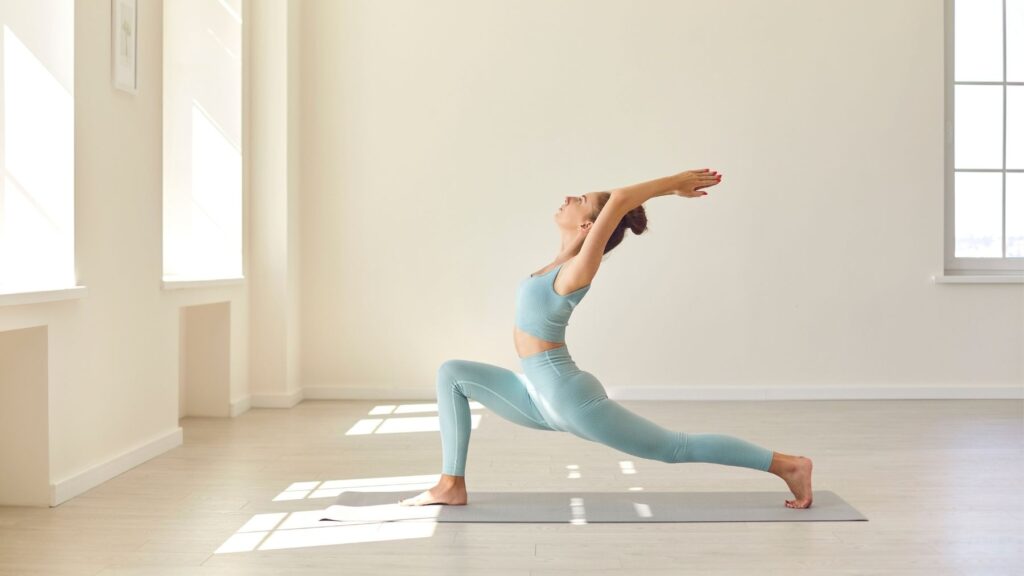
Pilates isn’t about burning calories. It’s about rebuilding your body’s structure, from the core out.
While traditional workouts often focus on outer muscles or aesthetics, Pilates zeroes in on your internal support system. That’s what makes it so effective for posture.
The method is built on six core principles: concentration, control, centering, precision, breath, and flow.
But the true game-changer? Postural alignment.
Every movement in Pilates is designed to align your spine, stabilize your core, and build mobility and control without forcing your body into unnatural positions.
Whether you’re performing a simple Pelvic Curl or flowing through Leg Circles, each motion trains your body to recognize and return to — its optimal posture.
Why not just stretch or lift weights instead?
Because Pilates blends strength and control with realignment. It’s the difference between a band-aid and a reset.
Core Strength – The Posture Powerhouse
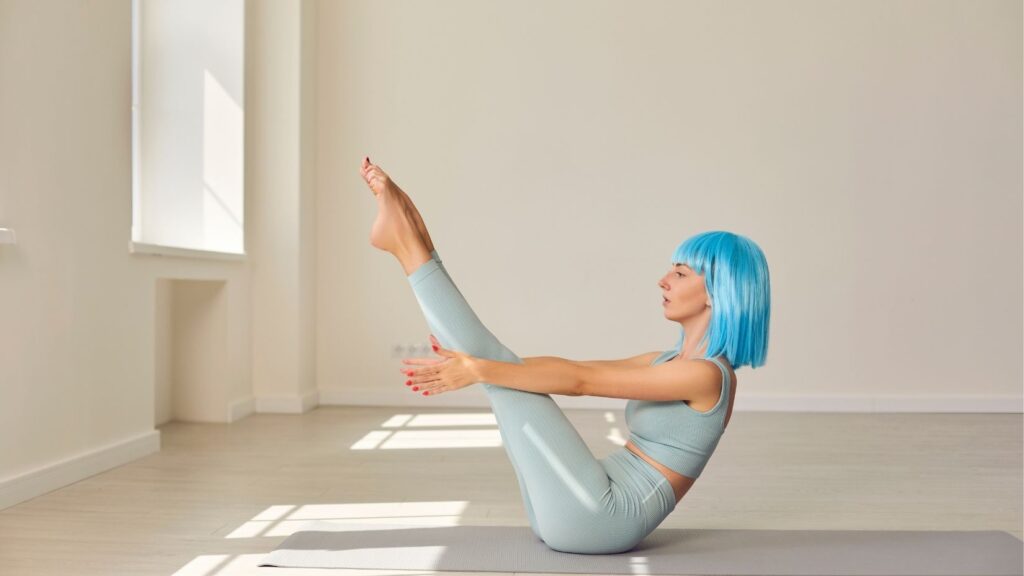
If your posture is the house, your core is the foundation. But we’re not talking about six-pack abs.
True core strength and posture are built on muscles like the transverse abdominis, pelvic floor, diaphragm, and multifidus — deep stabilizers that act like a corset for your spine.
Most people have weak or inactive deep core muscles due to sedentary habits.
This leads to a collapsed torso, anterior pelvic tilt, and rounded shoulders, all of which distort your posture over time.
Pilates retrains these muscles with precise, low-impact movements that teach your body how to support itself naturally, even when you’re not thinking about it.
It’s about creating spinal support from within.
A 2024 systematic review concluded that Pilates significantly improves spinal alignment and core stability after interventions lasting 8–16 weeks.
Can core-focused Pilates really fix posture?
Absolutely. Strengthening the deep core is one of the most effective long-term strategies.
Realigning The Spine Through Movement
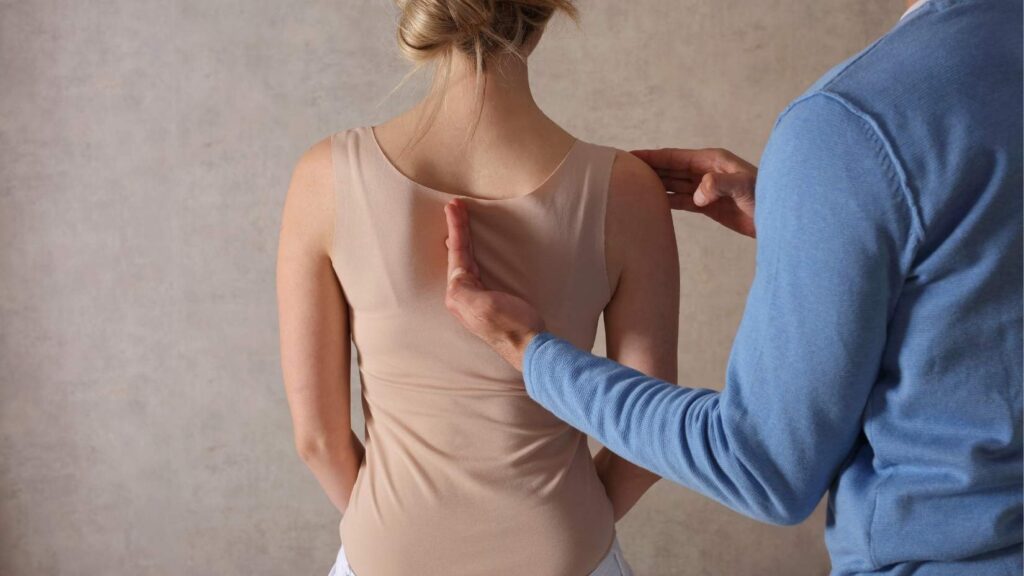
Imagine your spine as a stack of fragile building blocks. When they’re aligned, the structure is strong.
When they’re off? Everything wobbles.
That’s exactly what happens with poor posture, we lose our natural spinal curves and stability.
But Pilates helps restore what your body has forgotten.
Many Pilates exercises emphasize thoracic extension — that mid-back region often locked from hours of forward folding.
When this part of your spine becomes mobile again, your chest opens, shoulders drop, and head realigns. Suddenly, you’re standing taller without effort.
Movements like the Swan, Shoulder Bridge, and Spine Stretch Forward aren’t just fancy names — they’re tools that gently train your spine into its ideal position.
With repetition, your body starts craving that neutral spine and naturally shifts into it throughout the day.
How long before you feel a difference?
Most people feel lighter, taller, and more upright after just a few sessions.
Mindful Body Awareness = Posture Reset
You can’t fix what you don’t notice. And that’s one of the most powerful aspects of Pilates — it teaches you how to pay attention.
We’re not just moving; we’re listening to what the body tells us. That’s where real posture change begins.
Every Pilates session invites you to scan your alignment, engage specific muscles, and breathe with purpose.
You begin to feel when your shoulder hikes up or your lower back arches too much — and you correct it instinctively.
That’s body awareness, and it’s a skill that follows you far beyond the mat.
Over time, your subconscious catches up. You sit taller in your car. You adjust your stance while waiting in line. You stop letting gravity win.
Why is awareness so underrated?
Because posture isn’t only physical — it’s mental. And Pilates retrains both.
Reformer Vs. Mat Pilates For Posture
Which is better for posture:
?
The truth is, both have powerful benefits and the best choice often depends on your body’s needs and your starting point.
Mat Pilates builds your posture using gravity and your own bodyweight.
It’s accessible, equipment-free, and ideal for learning core engagement and alignment fundamentals.
If you’re new or dealing with minor postural issues, mat-based work is a strong start.
Reformer Pilates, on the other hand, introduces resistance using springs, straps, and a sliding carriage.
This allows for greater spinal articulation, more feedback for proper form, and enhanced shoulder stabilization.
Reformer is excellent for those recovering from injury or dealing with more pronounced postural asymmetries.
So which should you choose?
If you’re starting out, begin with mat. If you’re looking to level up or need tailored support, go with the reformer.
The Most Effective Pilates Moves To Improve Posture
Want a straighter back and a more confident stance? Start with the right movements.
Pilates offers a goldmine of posture-correcting exercises that are simple yet powerful when done with intention.
These aren’t about looking good on a mat — they’re about rewiring how your body holds itself throughout the day.
Here are some of the top Pilates posture exercises I recommend to my clients:
- Swan Dive: Builds thoracic extension and strengthens the mid-back.
- Chest Lift: Targets deep abdominal engagement for a stronger core and supported spine.
- Shoulder Bridge: Enhances glute and hamstring activation, helping neutralize anterior pelvic tilt.
- Scapular Isolation: Trains your shoulder stabilizers to reduce rounded shoulders.
- Spine Stretch Forward: Promotes spinal articulation and resets hunched posture.
- Wall Roll Down: Restores vertical alignment, one vertebra at a time.
These moves address everything from muscle imbalances to lack of body awareness.
When done consistently, they unlock better posture not just during workouts — but in everyday life.
How often should you do these?
Aim for 15–20 minutes, 3–4 times a week for noticeable posture transformation.
What To Expect – Posture Gains In 4 To 8 Weeks
Posture change doesn’t require perfection — it requires consistency.
You don’t need to be flexible or fit. You just need to show up and move with intention.
Most of my clients begin noticing subtle shifts after the first two weeks: less neck tension, better spinal awareness, and more frequent self-correction.
By week four, their core strength and posture noticeably improve. They walk taller. They sit straighter without effort.
By week eight, many report full postural transformation — reduced back pain, better energy, and a body that feels balanced again.
Is 8 weeks enough to “fix” posture?
It’s enough to feel a major shift and build a foundation you can continue to grow on.
Pilates For Posture At Work – Daily Integration Tips

Don’t leave your posture on the mat — take it to your desk.
Pilates principles can be integrated into your daily routine, especially if you’re tied to a computer for hours.
Here are a few easy ways to improve your sitting posture with Pilates-informed habits:
- Seated Neutral Spine: Sit upright, feet flat, spine long, ribs stacked over pelvis. Gently draw your navel in and up.
- Mini Shoulder Rolls: Release tension and remind the scapula to rest downward, not up by your ears.
- Wall Angels: At home or in a hallway, stand flat against the wall and slowly “raise the roof” to retrain shoulder stabilization.
- Breath Breaks: Every hour, take 5 deep Pilates-style breaths — inhale to expand the ribs, exhale to engage the core.
These micro-movements compound over time. Even while sitting, you’re training the nervous system to prefer upright alignment.
Can 2 minutes of movement undo 2 hours of slouching?
Not exactly but it breaks the habit and resets your posture for the better.
Final Thoughts
Let’s bring it all together. If your body feels like it’s constantly folding in on itself, neck forward, shoulders caved, back aching — it’s not a mystery.
It’s poor posture taking its toll. And no, it won’t fix itself with ergonomic chairs alone.
So… does Pilates improve posture?
Absolutely and deeply!
Pilates strengthens the deep core, retrains your spinal alignment, and builds body awareness that sticks.
It helps correct the muscle imbalances causing slouching, while rebuilding the mobility and strength your body was designed to maintain.
This isn’t about looking graceful — it’s about moving with ease, standing with confidence, and breathing without tension.
Is now the right time to begin?
Yes. If you sit, slouch, stand, or breathe, Pilates was made for you.
If you’re ready to work on your posture, I’d love to help you through a personalized plan or wellness consultation. Let’s take the weight off your shoulders — literally.


